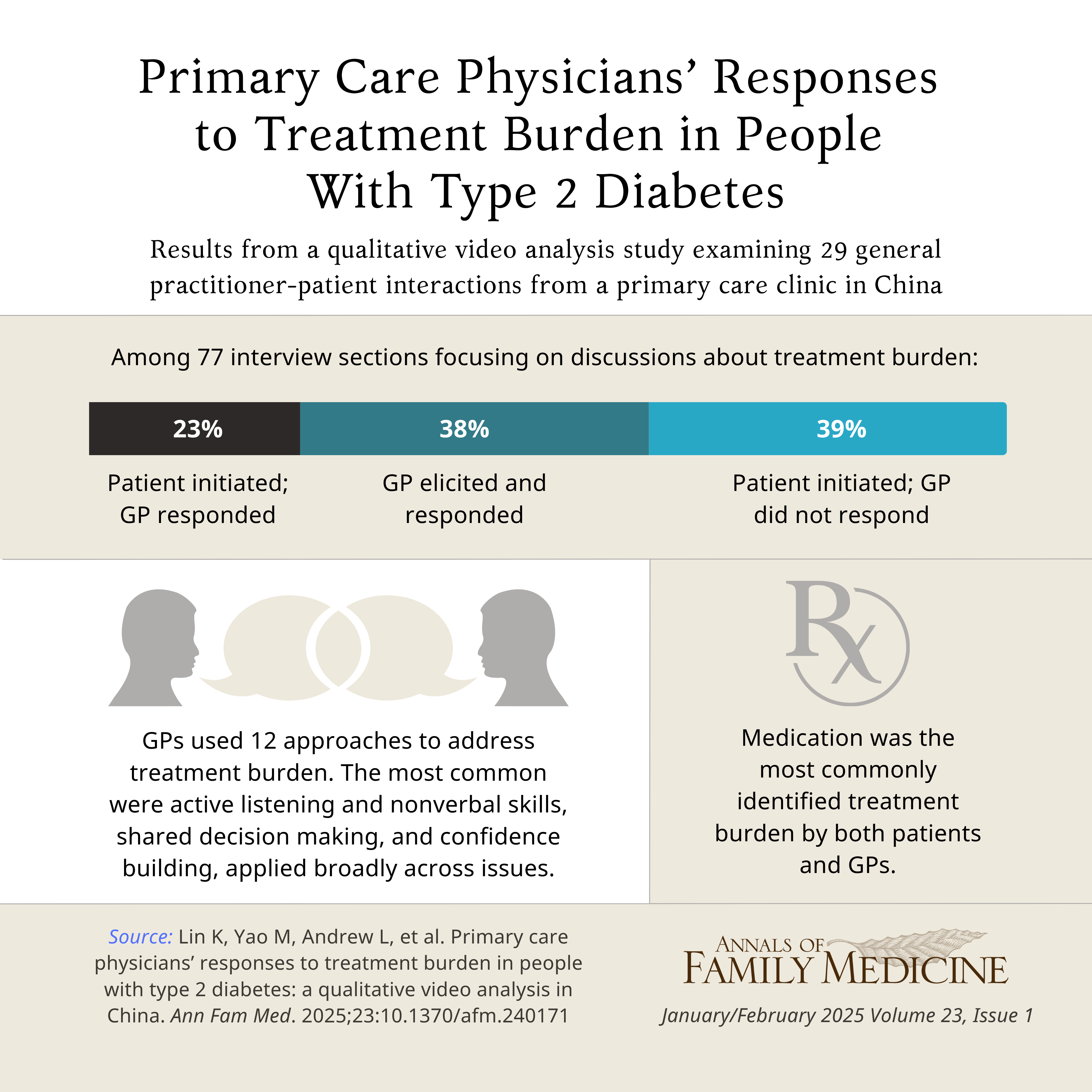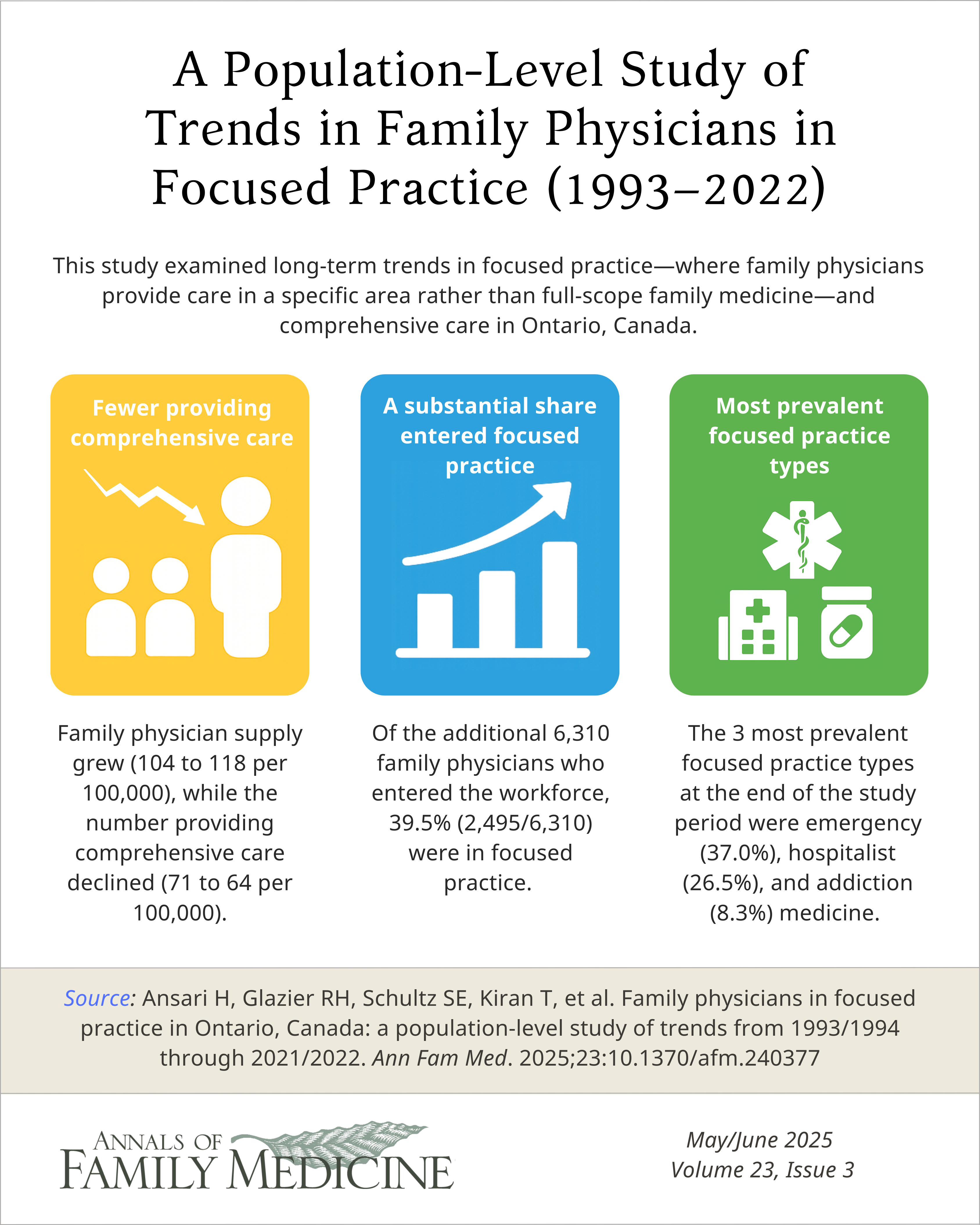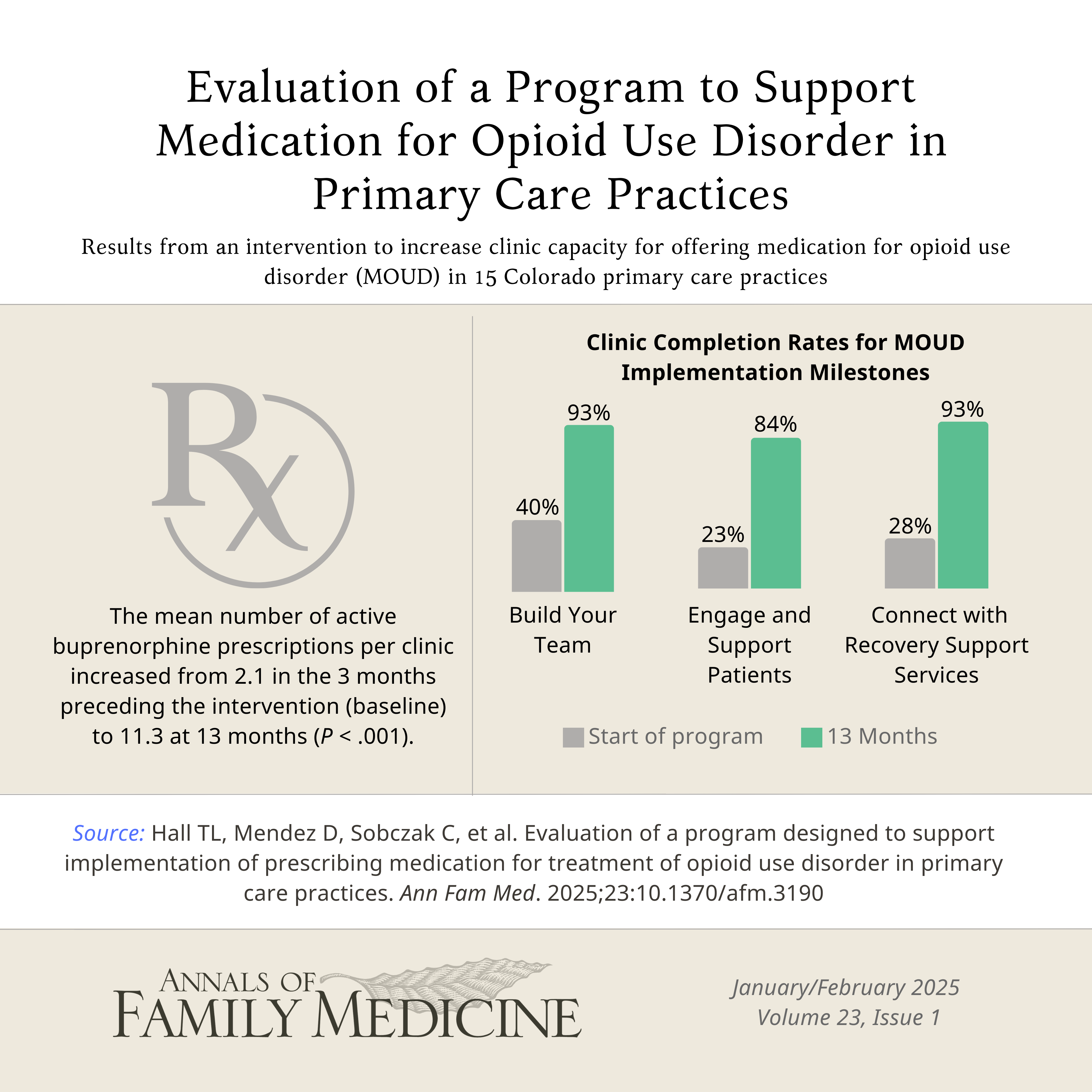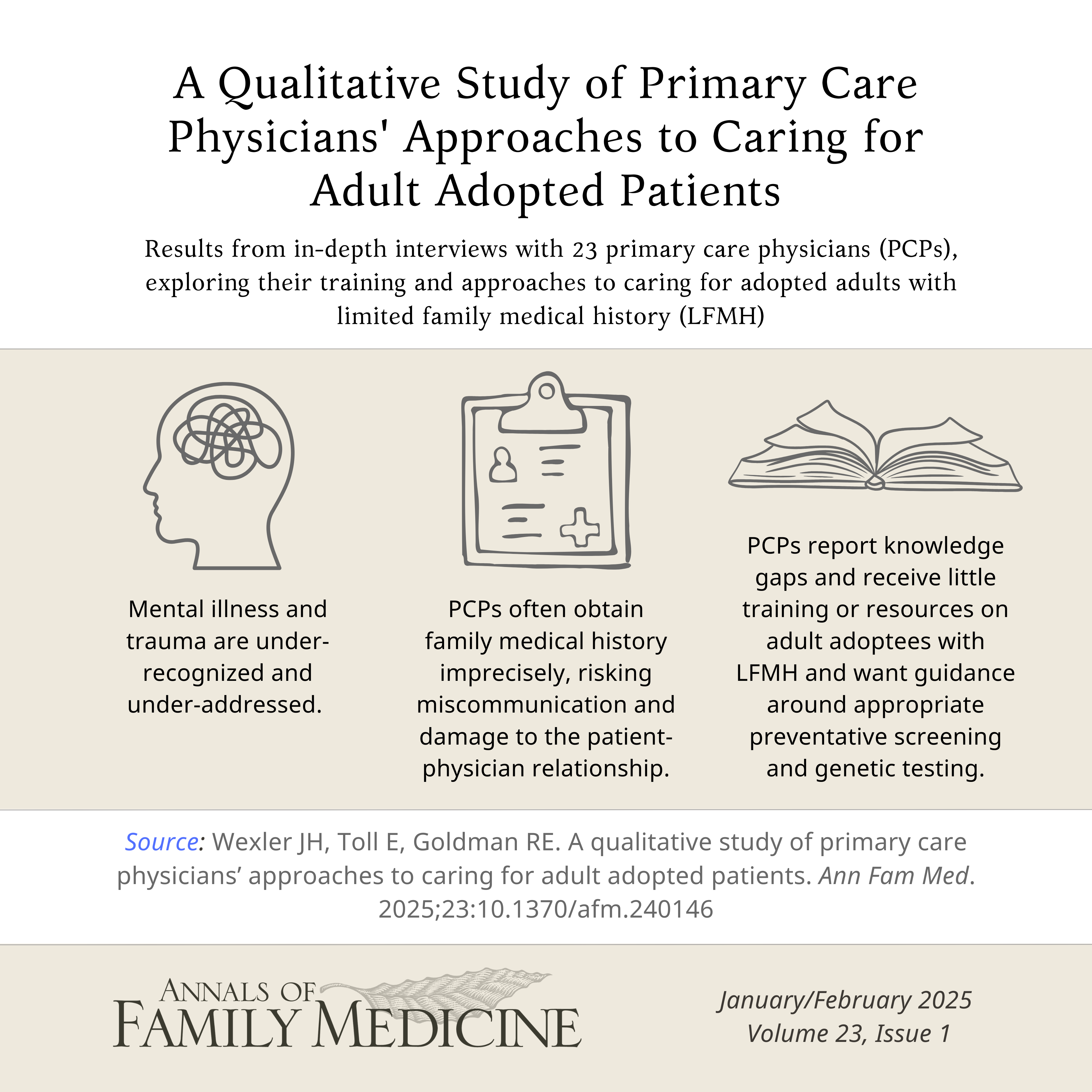For more visual abstracts, visit our Visual Abstracts Archive.
2025 | Volume 23, Issue 3
Seven Opportunities for Artificial Intelligence in Primary Care Electronic Visits: Qualitative Study of Staff and Patient Views
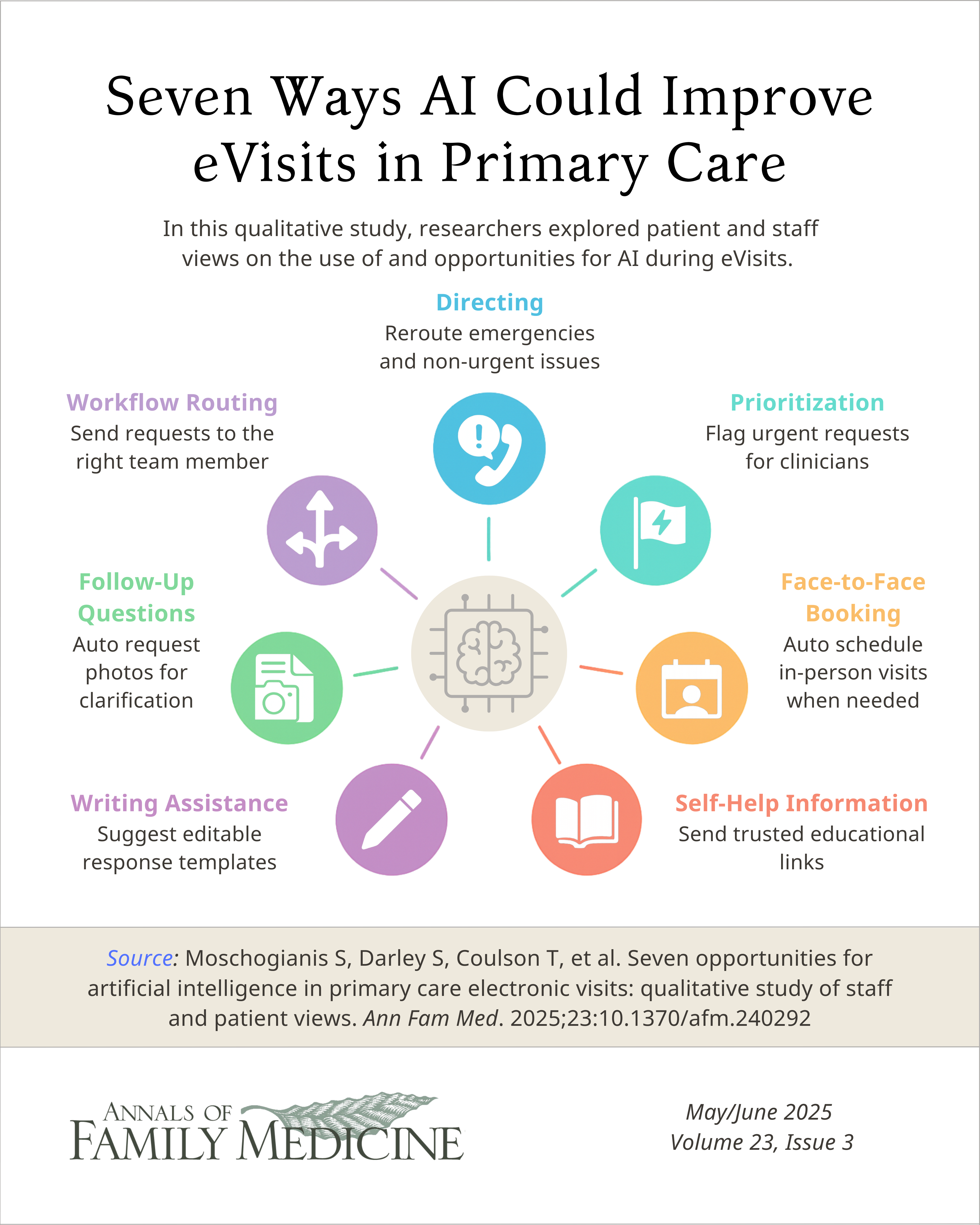
2025 | Volume 23, Issue 2
2025 | Volume 23, Issue 1
Evaluation of an AI-Based Voice Biomarker Tool to Detect Signals Consistent With Moderate to Severe Depression
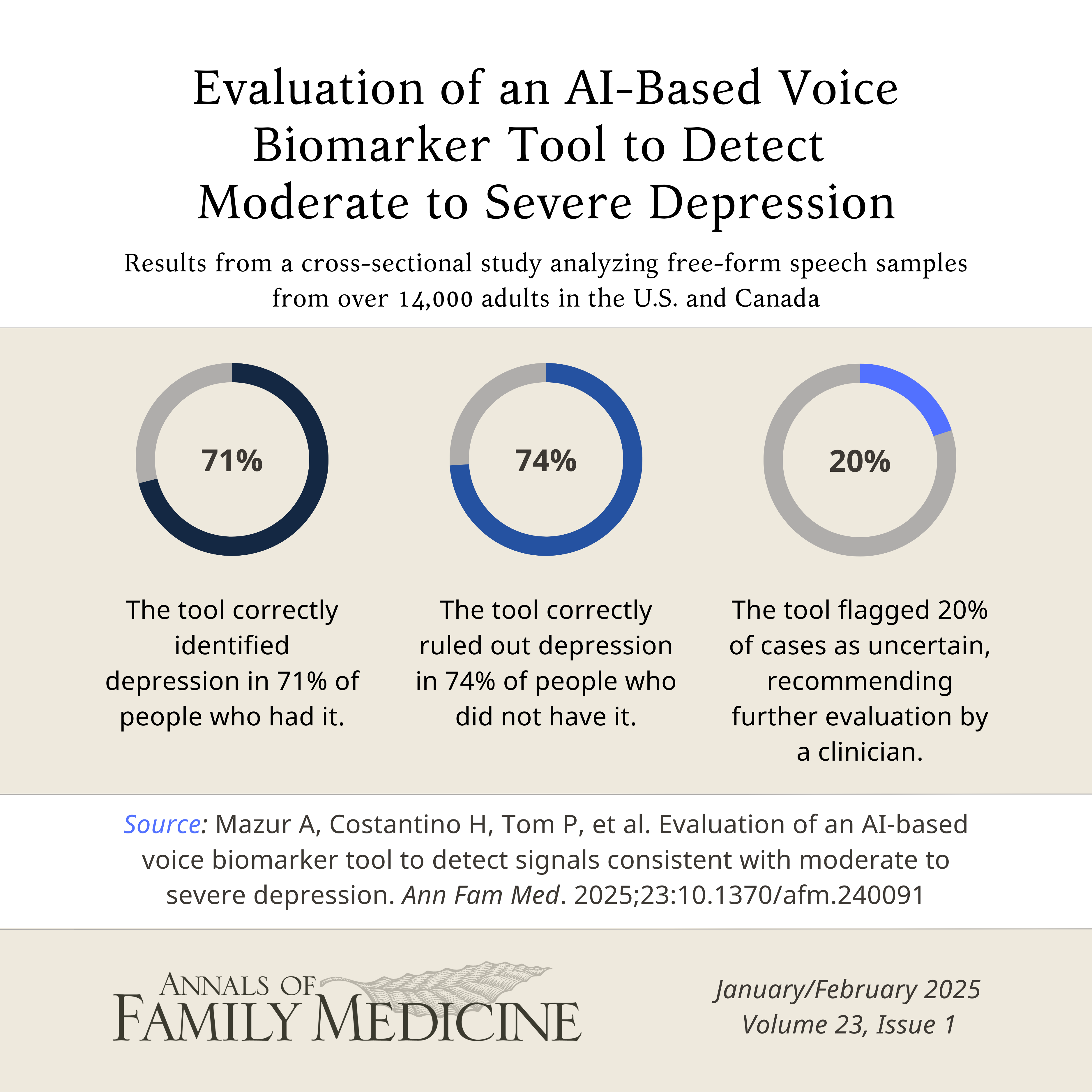
Breaking ICD Codes: Identifying Ambiguous Respiratory Infection Codes via Regional Diagnosis Heterogeneity
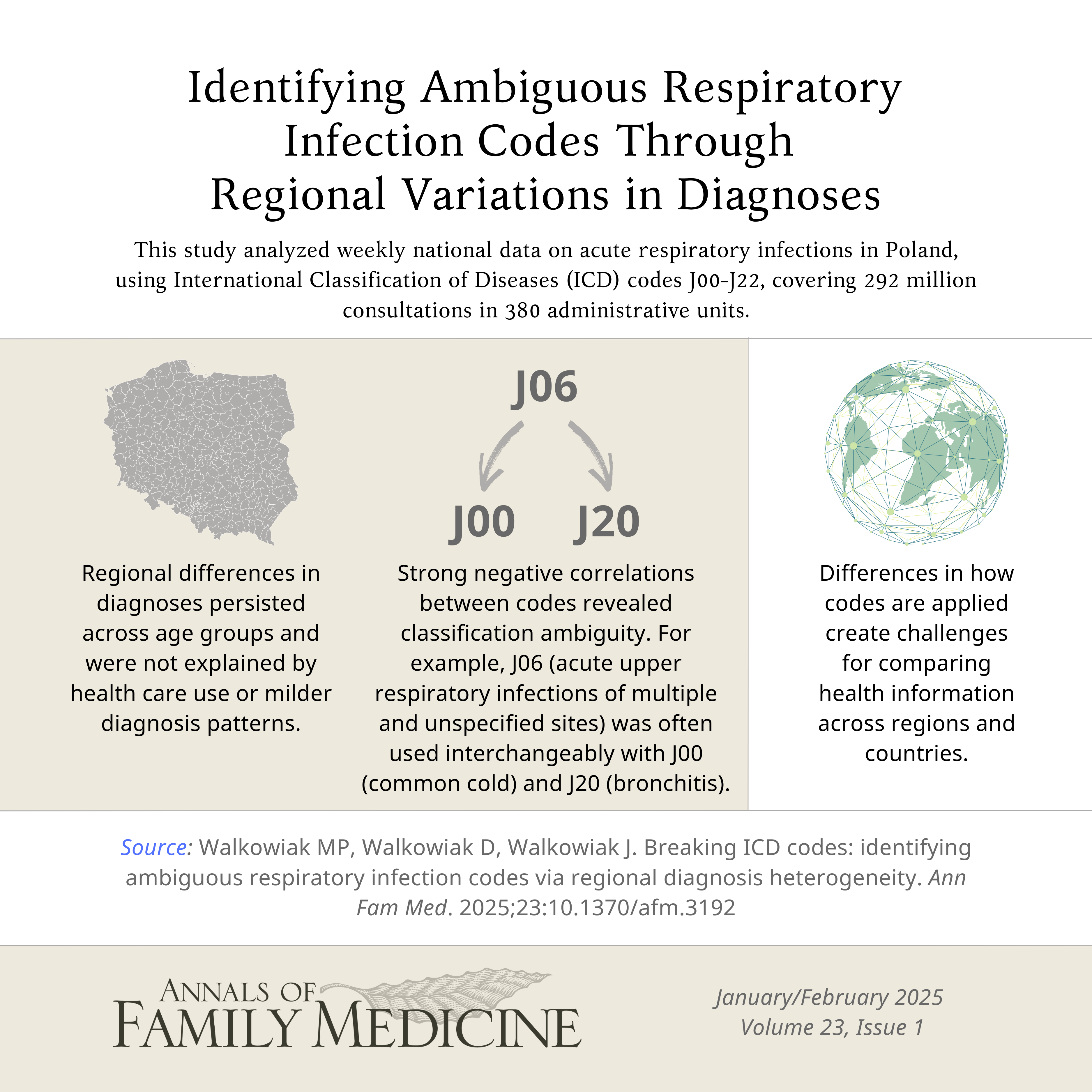
Primary Care Physicians’ Responses to Treatment Burden in People With Type 2 Diabetes: A Qualitative Video Analysis in China
